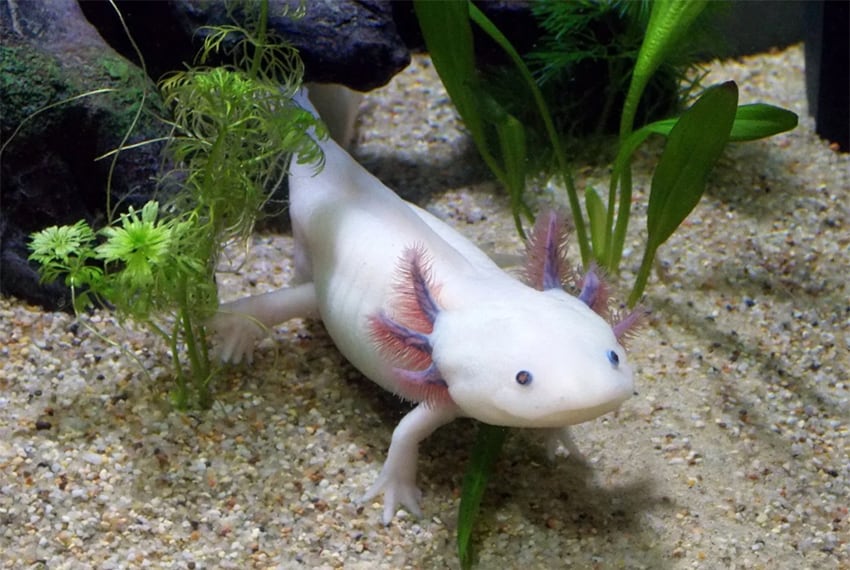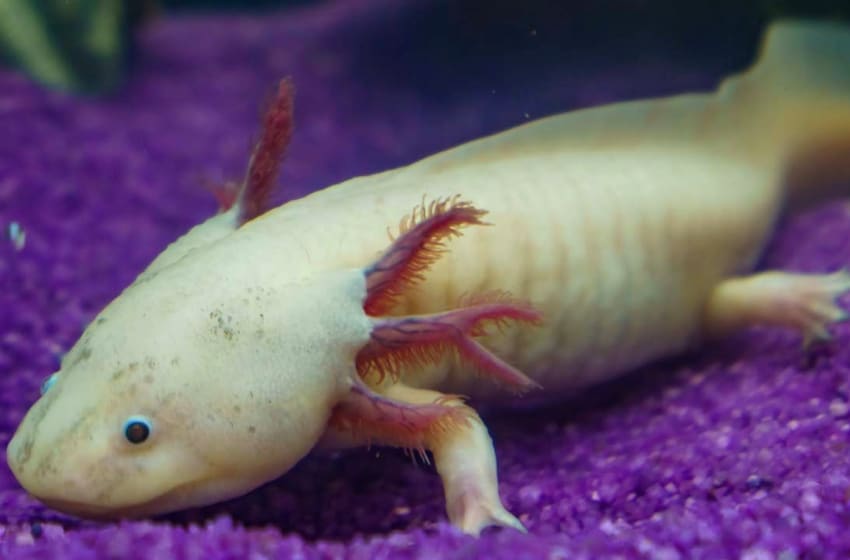A new study by the National Autonomous University of Mexico (UNAM) predicts that axolotls will completely disappear from their native Xochimilco canals in 2025.
The axolotl is an endangered Mexican salamander endemic to the lakes and wetlands of the Valley of Mexico (today Mexico City). Its remaining habitat is limited to the canals running through the chinampas (artificial islands) of Xochimilco, one of Mexico City’s southernmost boroughs. However, experts warn they could completely disappear from the wild next year.

“In 1998, there were 6,000 axolotls per square kilometer,” Luis Zambrano González from the Biology Institute of the UNAM, said in November 2023 during the presentation of the Adoptaxolotl 2024 campaign. “The last census was carried out in 2014 and there were only 36 [per square kilometer].”
Later, in 2019, an assessment by the International Union for the Conservation of Species found only between 50 and 1,000 axolotls left in the wild. The causes leading to their elevated risk of extinction include pollution, rising water temperatures and the introduction of fish for human consumption to their habitat.
About the axolotl
Pale pink or deep black in color, the axolotl has risen to international fame as Mexico’s cutest underwater mascot.
The axolotl has the unique ability to regenerate lost limbs and organs, enabling them to stay “young” throughout their lives. Unlike other amphibians, they never outgrow their larval, juvenile stage, a phenomenon called neoteny.
As a result of this, experts from the Institute of Biomedical Research and UNAM’s Faculty of Higher Education initiated a study in 2021 to identify germ cells that could aid in the potential regeneration of ovaries and testes. This discovery may have applications in fertility treatments.
The axolotl is thought to reach maturity at around 1.5 years and, in captivity, can live for about 10 years. They can grow up to 30 centimeters in length, although their average size is 15 cm.

Conservation efforts to protect Mexico’s axolotl population
Zambrano has been working on conservation plans to protect the axolotl’s natural environment for over 20 years. He and his team have concluded that the only way to save and study the wild axolotl is through a revival of ancient farming practices — which do not use pesticides or chemical fertilizers — paired with a strategy of converting farmers’ canals into sanctuaries for the axolotls.
Currently, Zambrano and his team are collaborating with chinamperos (farmers) on the latter goal to introduce specimens into areas of the canals that have not yet been disturbed by humans.
Another effort includes the international “AdoptAxolotl” fundraising campaign by the UNAM, through which you can donate directly to conservation efforts.
With reports from National Geographic, Proceso and The New York Times
